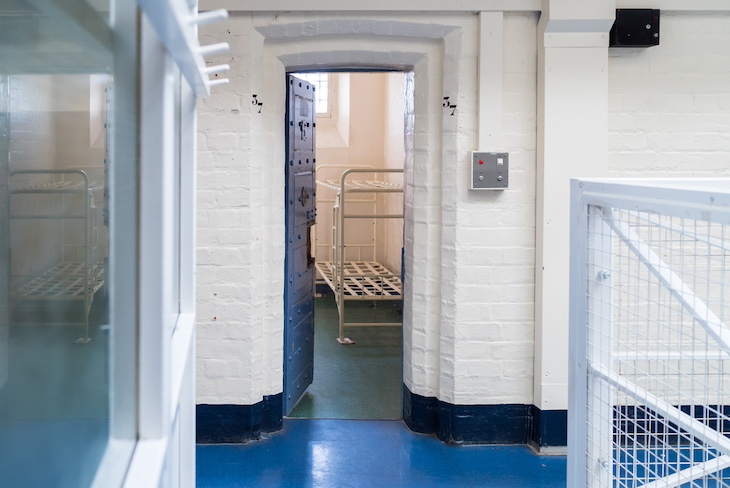One of the new government’s first decisions was to announce that most prisoners would be released 40 per cent of the way through their sentence, not half-way through as had been the case before. In July the expectation was that around 5,500 inmates would be released early. In fact 1,700 were released in September, and around 1,100 are expected to be released this week. This, combined with the 600 extra prisoners after August’s riots, and the ongoing growth in the prison population, means we will soon run out of space again.
What’s the point in releasing people 40 per cent of the way through their sentence, if they’re likely to be recalled to serve the rest within months?
There’s currently space for 89,136 people in our prisons. In September, just after the first wave of early releases, the prison population was 86,333. On Friday it had risen to 87,028. Even allowing for this week’s releases, if that growth rate continues our prisons will be full by the spring. Why is this happening? Police are solving fewer crimes and we’re jailing fewer people. What’s actually pushing up the prison population is longer sentences, the remand population (those in prison ahead of their trial) and recalls back to prison. Sentencing policy changes have driven up the average sentence, and the remand population will keep growing while our courts don’t have enough judges, lawyers and sitting days. But what about those recalled to prison?
When prisoners are released they are still subject to the terms of their sentence, and are set free ‘on licence’. This means that if they commit another offence, breach the conditions of their licence, or give probation cause to believe that they may be about to harm the public, they can be recalled to prison. Some of these recalls are for as little as 14 days, and some are for the rest of the offender’s sentence.
Recall is a relatively recent addition to our justice system. In the early 1990s it is estimated that only around 100 prisoners were in jail after being recalled. Since then three key pieces of legislation have significantly changed how recall is used. In 1998 the Crime & Disorder Act allowed prisoners serving sentences of up to four years to be recalled without a court’s approval being needed. The 2003 Criminal Justice Act, which introduced automatic release halfway through sentences, changed the ‘licence period’, from the three-quarter point of a sentence until the very end. Then the Criminal Justice & Immigration Act 2008 introduced Fixed Term Recall, under which people can be recalled to prison for 14 or 28 days.
As a result, by 2018 the recall population stood at 6,000. It has soared since then, and is now over 12,000. In part this is being driven by probation staff’s fear of leaving people at large who go on to commit serious further offences, such as Jordan McSweeney and Joshua Jacques. While this caution is understandable, when I speak with probation officers I hear about a culture of fear created by management, which makes staff intensely risk averse, and ever more likely to recall someone to prison.
Perhaps this is why many recalls are triggered not because of a new offence, or a risk of harm, but rather simply because the offender has missed appointments with probation. While ‘making appointments’ might seem a reasonable requirement, it underestimates how chaotic the lives of many people on probation are. Released homeless and unemployed, struggling just to find a roof and food each day, it is perhaps not surprising that many fail to meet probation when they should.
Around three quarters of all recalls are believed to be for the whole of their remaining sentence, rather than just for 14 or 28 days. These people have to be approved by a Parole Board to be released early, and the backlogs mean long waits. In one sense the decline of short recalls is positive; 14 and 28 day recalls destroy any stability a person might have been building, while putting them in prison for such a brief period that nothing good can be done. But the greater use of longer recalls is pushing the recall population up and up, and is directly counter to the government’s early release policy. What’s the point in releasing people 40 per cent of the way through their sentence, if they’re likely to be recalled to serve the rest within months?
So now the government must find a long-term solution, and fast. Tomorrow Shabana Mahmood, the Lord Chancellor and Justice Secretary, will announce a new Sentencing Review. I understand that this is expected to be chaired by David Gauke, Tory Justice Secretary in 2018 and 2019. Expected to take around six months, this review will likely be looking at international examples such as Texas, as well as different approaches to recall.
The Sentencing Review’s proposals, even if legislated for quickly, will take time to feed into the system, and the prisons will be full again next year. What can the government do in the meantime? They could look to use an existing tool, the Risk Assessed Recall Review, to accelerate the release of recalled prisoners who pose a low risk but have a long wait for a parole hearing. They should also look at why people are being recalled, and in particular look to scrap 14 and 28 day recalls. It doesn’t do anything, likely drives up crime, and places further burdens on the broken prison system. Let’s stop using it.
Watch more on SpectatorTV:







Comments